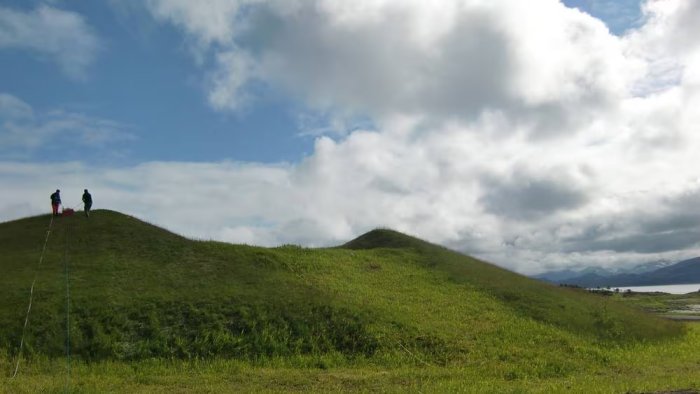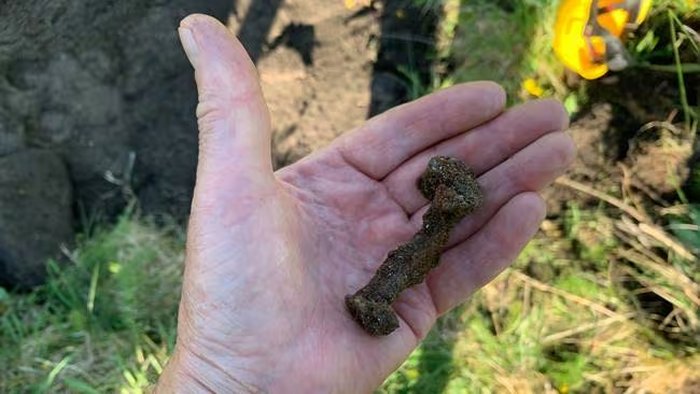Jan Bartek – AncientPages.com – An amazing find has been made in central Norway. While investigating a burial mound at Leka in Trøndelag they made a discovery that caused great excitement and re-writes history. The research team unearthed Scandinavia’s oldest known ship burial, dating back to around 700 C.E.

Under this mound at Leka in Trøndelag, archaeologists have found a ship grave from before the Viking Age. Credit: Robert Fry /NTNU Science Museum
Scientists took samples of the wood around the nails on the boat to date the shipwreck. Rogaland has some ship graves from the late 7th century, but this one is even older.
The ship is from the Merovingian period (550-800 C.E).
Geir Grønnesby, project leader from NTNU Science Museum, told NRK that the vessel predates the Viking Age, and challenges existing beliefs about the region’s maritime and trading history.
Not only does the amazing discovery push the ship burial tradition quite far back in time, but it also offers evidence that the region was familiar with advanced maritime capabilities much earlier than previously thought. Obviously, people were in contact with foreign part of the world much earlier than one expected. “Because when one builds somewhat large ships, it is usually because one is going to travel a distance with them,” Grønnesby said.
It is known that from the middle of the 7th century, people from Trøndelag traded with the Continent. This transport of goods is central to understanding the Viking Age and the development of ships before the Viking era.

Silvered bronze mount of an armoire depicting the victory of Merovingian King Merovech over the armies of Attila the Hun in 451. By Emmanuel Fremiet, 1867. In the collection of the Metropolitan Museum of Art. Credit: Public domain, CC BY-SA 3.0
There are few archaeological finds from the Merovingian Age in Scandinavia, which explains why there is little historical knowledge about this period. Some intriguing findings have naturally been made, like, for example, the early boat burials in Vendel and Valsgärde, Sweden, but in general, there are a few discoveries.
There is one in Norway where archaeologists expect to make finds from this period,
Analysis, though, and that site is known as Namndalen.
“In fact, about 10 percent of the large burial mounds in Norway are in Namdalen. These are piles of more than 37 meters in diameter, and it is almost inexplicable that an anonymous valley road in Norway seems to be central to the construction of large piles,” Lars Forseth from Trøndelag County Municipality said.

Analysis of the ship’s nails helped date the ship. Credit: Geir Grønnesby
It is currently unknown what these large piles contain, and most likely, there is a connection between them and similar graves in Uppsala in Sweden and Suffolk in England.
See also: More Archaeology News
Future archaeological excavations may open yet another chapter in our ancient history books.
The archaeological investigations have been carried out on behalf of the National Archives and in collaboration with Trøndelag County Municipality.
Written by Jan Bartek – AncientPages.com Staff Writer





